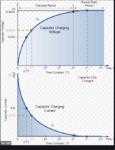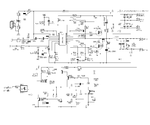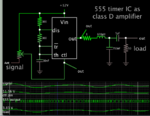Hasan2017
Member level 4
Hi there,
I think people who works in 'Analog or Power electronics" understand this issue.
I am having a project on, "3 phase power Calibrator"
Like me previous post I was trying to go with a ClassAB for current and voltage amplifier.https://www.edaboard.com/showthread.php?386525-Lets-take-a-look-on-a-linear-amplifier
Comparable study shows, ClassAB is less suitable than ClassD.
ClassD is a voltage source device, so current transformer may not be use, https://www.diyaudio.com/forums/class-d/343198-class-amplifier-suitable-60hz-potential-transformer.html#post5927022
I think potential transformer can be use with ClassD, https://www.element14.com/community/thread/73845/l/classd-amplifier-for-transformer
Since my project need to get Current transformer output, kindly suggest me what should I do.
I'am not sure with this solution, https://e2e.ti.com/support/motor-drivers/f/38/t/848028
I think people who works in 'Analog or Power electronics" understand this issue.
I am having a project on, "3 phase power Calibrator"
Like me previous post I was trying to go with a ClassAB for current and voltage amplifier.https://www.edaboard.com/showthread.php?386525-Lets-take-a-look-on-a-linear-amplifier
Comparable study shows, ClassAB is less suitable than ClassD.
ClassD is a voltage source device, so current transformer may not be use, https://www.diyaudio.com/forums/class-d/343198-class-amplifier-suitable-60hz-potential-transformer.html#post5927022
I think potential transformer can be use with ClassD, https://www.element14.com/community/thread/73845/l/classd-amplifier-for-transformer
Since my project need to get Current transformer output, kindly suggest me what should I do.
I'am not sure with this solution, https://e2e.ti.com/support/motor-drivers/f/38/t/848028






